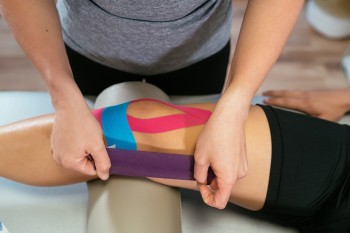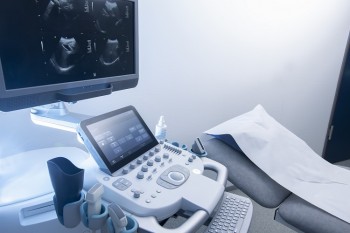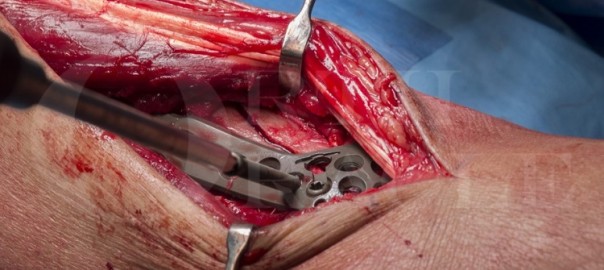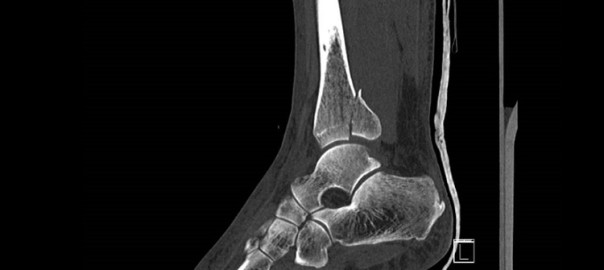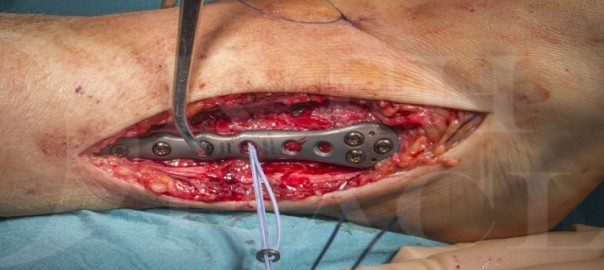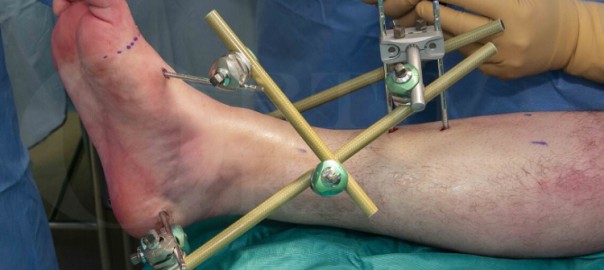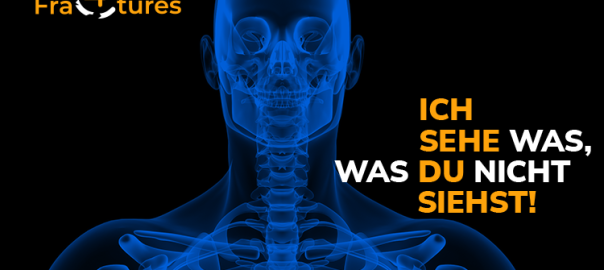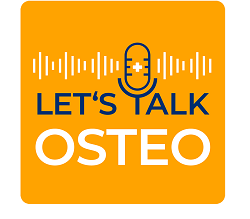Übersetzt aus dem Englischen:
Lernen Sie die chirurgische Technik der Pilonfraktur: Interne Fixierung unter Verwendung einer Stryker AxSOS 3Ti-Platte mit schrittweisen Anweisungen auf OrthOracle. Unsere E-Learning-Plattform enthält hochauflösende Bilder und eine zertifizierte Fortbildung (CME) des chirurgischen Verfahrens der Pilonfraktur: Interne Fixierung unter Verwendung einer Stryker AxSOS 3Ti-Platte.
Pilonfrakturen sind Frakturen des distalen Tibiaplafonds und sind per Definition intraartikulär und in einem belasteten Gelenk, was sie zu schweren und oft lebensverändernden Frakturen macht. Die Fraktur entsteht durch eine Mischung aus Scher- und Druckbelastungen auf die distale Tibiametaphyse.
Pilonfrakturen machen zwischen 5 und 10 % aller Frakturen der unteren Extremität aus und sind aufgrund der beteiligten Energie mit einer hohen (15-55 %) Komplikationsrate verbunden. Eine erhebliche Rotationskraft kann auch distale Tibiafrakturen verursachen, die den Plafond einbeziehen, und dies sind ebenfalls Pilonfrakturen. Dieser Mechanismus hat jedoch normalerweise weniger schwere Schädigungen des Weichgewebes und weniger Kompromisse in Bezug auf die Gelenkfläche hinsichtlich Fragmentierung und Knorpelschäden.
Der häufigste Verletzungsmechanismus ist ein Sturz aus großer Höhe, und dieser Fall demonstriert dies, nachdem er durch einen 4 Meter hohen Sturz auf Beton durch ein schwaches Dach verursacht wurde.
Die große Debatte besteht darin, wann eine offene Repositionsinterne Fixierung (ORIF) oder eine minimalinvasive Plattenosteosynthese (MIPO) verwendet werden soll und wann ein externes Fixationsgestell (wie ein Ilizarov oder ein anderes Drahtkonstrukt) als definitive Behandlung eingesetzt werden soll. In meinen Händen und in einer Einheit mit ausgezeichneten Fertigkeiten in der Drahtfixation vor Ort behandeln wir in der Regel diejenigen Fälle mit sehr schweren Weichteilschäden oder bei denen die Gelenkfläche stark fragmentiert ist, mit einem Gestell. Die Fälle, bei denen die Grad der Gelenkfragmentierung weniger schwerwiegend ist, werden in der Regel mit Plattenfixierung behandelt, wie es bei dem hier vorgestellten Fall der Fall war.
Original Intro:
Pilon fracture: Internal fixation using Stryker AxSOS 3Ti plate
Learn the Pilon fracture: Internal fixation using Stryker AxSOS 3Ti plate surgical technique with step by step instructions on OrthOracle. Our e-learning platform contains high resolution images and a certified CME of the Pilon fracture: Internal fixation using Stryker AxSOS 3Ti plate surgical procedure.
Pilon fractures are fractures of the distal tibial plafond and by definition are intra-articular and in a load bearing joint, this renders them serious and often life changing fractures. The fracture is sustained by a mixture of shear and compressive loads to the distal tibial metaphysis.
Pilon fractures make up between 5 and 10% of all lower limb fractures and because of the energy involved are associated with a high (15 – 55%) complication rate. Significant rotational force can also cause distal tibial fractures which involve the plafond and these are also pilon fractures. This mechanism though usually has less severe soft tissue damage and less compromise to the articular surface in terms of comminution and cartilage damage.
The most frequent mechanism of injury is a fall from height and this case demonstrates this , being sustained after a 4 metre fall onto concrete through a weak roof .
The big debate is when to use ORIF or minimally invasive plate osteosynthesis (MIPO), and when to use an external fixation frame (such as an Ilizarov or other fine wire construct) as definitive treatment. In my hands and working in a unit with excellent fine wire fixation skills locally we tend to treat those cases where there is very severe soft tissue damage or where the articular surface is grossly comminuted with a frame. Those cases where the degree of articular comminution is less severe are usually treated with plate fixation as was the case presented here.
OrthOracle readers will also find the following instructional operative techniques of use:
Pilon fracture: C-type fixed using Smith and Nephew EVOS small fragment system.
Pilon Fracture: C-type fixed with Stryker AxSOS 3 Periarticular Plating System
Pilon fracture: Internal fixation using Stryker AxSOS 3Ti plate.
Ankle fracture : Fibula pro-tibia fixation technique with Stryker Variax plate.
Ankle fracture: Medial malleolar fixation with ASNIS screws
Ankle fracture: Lateral malleolar fixation using Acumed Fibula Rod System
Author: Mr Chris Blundell FRDS (Tr & Orth)
Institution: IThe Northern General Hospital, Sheffield, UK.
Clinicians should seek clarification on whether any implant demonstrated is licensed for use in their own country.
zum AOUC-Angebot für OrthOracle




